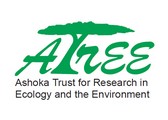Any and all opinions expressed in this newsletter are solely those of the author(s) and do not reflect the opinion of ATREE.
Centre for Excellence in Conservation Science
Royal Enclave,Srirampura,Jakkur Post
Bangalore-560064
Telephone: 080-23635555 (EPABX)
Fax : 080- 23530070
There are about 200 villages situated in the 5 km buffer area outside Kalakad Mundanthurai Tiger Reserve (KMTR). Majority of these villagers were dependent on the forest for income, livelihood and sustenance activities viz. fuelwood and cattle grazing. During the erstwhile Zamindari period these activities were legal; whereby 'pass' system was followed for regulating the use of forests resources which was nothing but a version of the modern day 'license'. After abolishment of the Zamindari system, the Government enforced strict laws under the wildlife act which restricted any kind of forest use by the people. After Kalakad and Mundanthurai Forests was elevated to Tiger Reserve in 1988, and laws began to enforced quite strictly. Activities such as fuelwood and fodder collection, cattle grazing etc were banned. Before the implementation of Eco-development Program in the absence of any viable alternative occupation or source of income and livelihood, varying degrees of fuel wood collection and grazing continued to happen inside the reserve albeit illegally. Since 2001, ATREE's Agasthyamalai Community Conservation Centre (ACCC) has been monitoring the fuel wood collection and cattle grazing inside the reserve. Our initial survey recorded the entry of 40 fuelwood collectors and 60 cattle herds in the forest each day in one of the routes that led to sanctuary. Among the fuel wood collectors the gender ratio was skewed towards women, who were mostly young and middle aged women. In comparison fewer men were being recorded who also fell mostly in the young-middle aged category. The number of fuel wood collectors was generally higher during non-agricultural season as the non-regulars too collected for domestic purposes. The sight of a single person carrying multiple bundles of fuel wood was not uncommon. However, cattle entry was lower during the non-agricultural season when fallows and agricultural fields were available for grazing. Through our initial survey (2001-2005) we realized that there were no alternative sources of biomass or fuel wood for the people dependent on fuel wood either for subsistence or income. From 2008 onwards there seems to be a change in the general trend. Overall there seemed to be a drastic decrease in the number of both fuel wood collectors and cattle entering the forest. No newcomers and only middle and old aged people seem to be collecting forest fuel wood that too not regularly. Eco-development project, Government schemes like subsidized rates for rice and National Rural Employment Guarantee Act provided people with cash. This discouraged people from doing the laborious task of collecting fuel wood instead people started buying non-forest fuel wood from outside the area. Though alternate source of income inside the village could be created for people, no alternate grazing area for cattle was available. All barren lands close to the forest and inside the village are being converted as plantations or sold for making housing plots and industry. Scarcity of grazing area is one of the reasons for decreasing cattle population. Monitoring the dependency has helped us perceive changes and also possibly predict to an extent how the future could be. Local governance is needed to save the barren lands, wetlands and other natural resources which will provide the biomass and other services to the people and animals living adjacent to the forest.
&
nbsp;
Editorial Team
Editor: Allwin Jesudasan
Associate editor: Rajkamal Goswami
Editorial Review: R. Ganesan, M. Soubadra Devy, T. Ganesh
Design and presentation: Kiran Salegame
A S H O K A T R U S T F O R R E S E A R C H I N E C O L O G Y A N D T H E E
N V I R O N M E N T
Monitoring forest dependency
-M. Mathivanan
If you have any suggestions or comments please let us know through the boxes below






